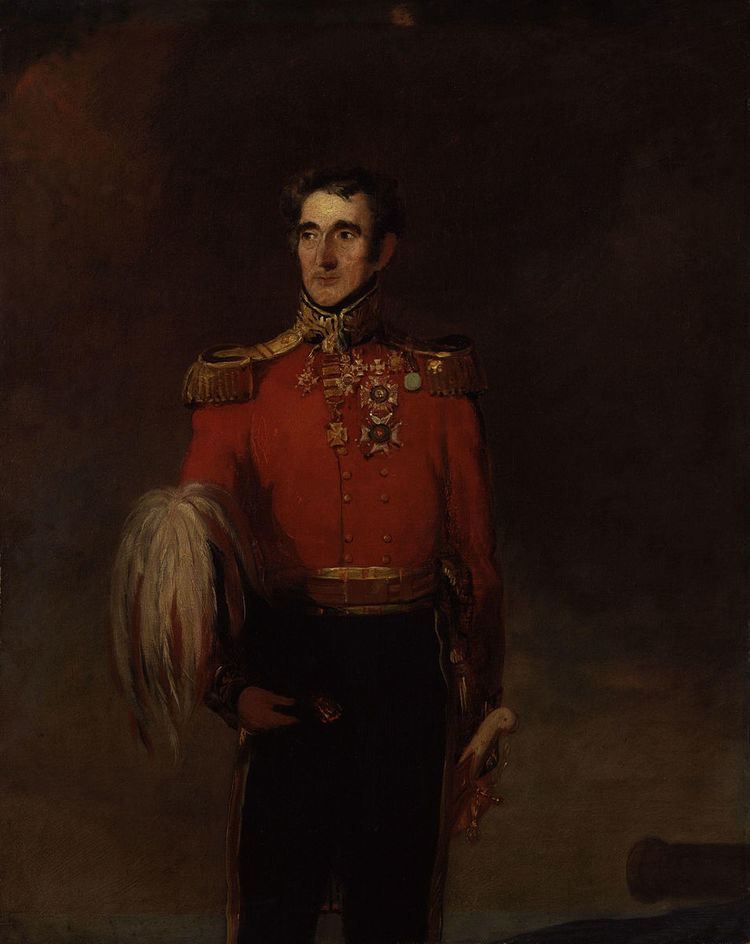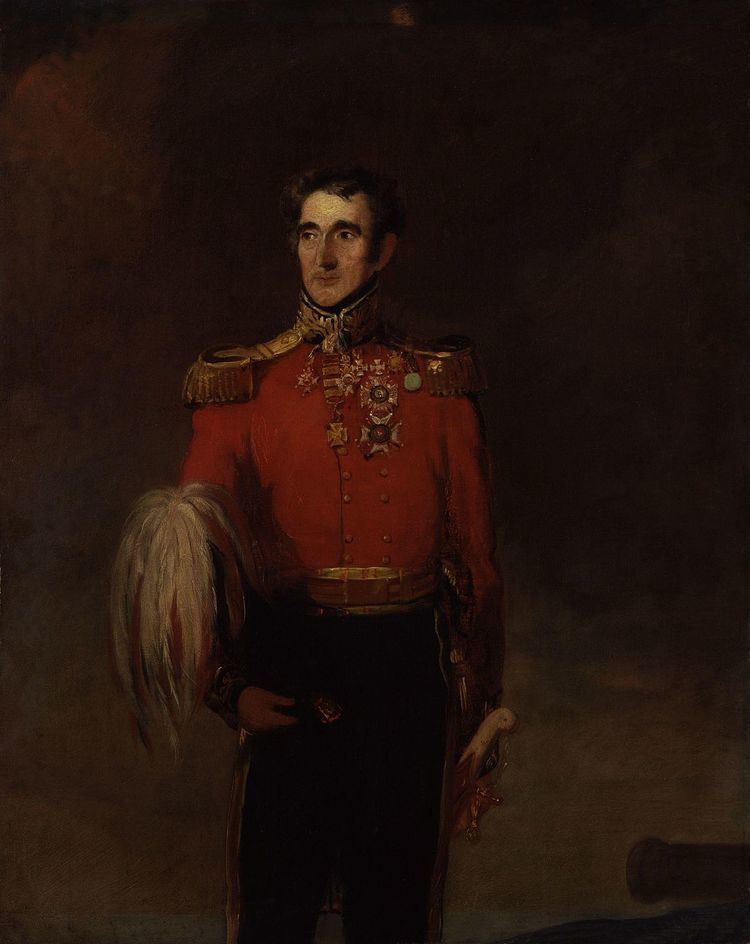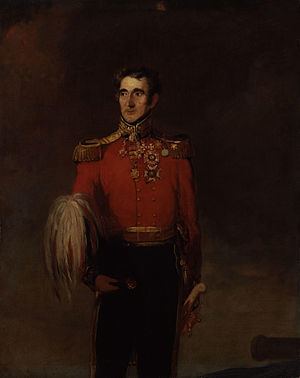Years of service 1789–1839 Allegiance United Kingdom Rank Lieutenant-general | Name John Elley | |
 | ||
Born 9 January 1764Leeds, Yorkshire, England ( 1764-01-09 ) Similar People Albert - Prince Consort, William IV of the United Ki, Mary of Teck | ||
John elley 2015 hair warz winner final cut pro x multicam
Lieutenant-General Sir John Elley (9 January 1764 – 23 January 1839) was a British soldier who joined the cavalry as a private, and rose to general officer rank. He fought with distinction during the French Revolutionary and Napoleonic Wars, and later served as Governor of Galway and as Colonel of the 17th Lancers.
Contents
- John elley 2015 hair warz winner final cut pro x multicam
- Early life
- Army career
- Waterloo Campaign
- Post war career
- Death and legacy
- References

Early life
Information about Elley is scarce, perhaps partly because of his humble origins. He was born in Leeds in 1764. His father ran an eating-house at Furnival's Inn. Apprenticed to Mr. John Gelderd, a tannery owner of the village of Meanwood near Leeds, West Yorkshire, he became engaged to his masters daughter Anne. After her untimely death, he enlisted, in 1789, as a trooper in the Royal Regiment of Horse Guards, and saw service in the Flanders Campaign (1793–1795).
Army career

Elley made his first step out of the ranks by becoming a Cornet in his regiment on 14 June 1794. On 30 January 1796 he was promoted to Lieutenant, and 11 January 1800 was made a Captain-Lieutenant. Elley acquired promotion to Captain by Purchase on 17 March 1801 to Major on 15 December 1804, and to Lieutenant-Colonel on 11 March 1806.
One famous act of heroism occurred at the Battle of Talavera (1809), as he led the charge riding a white horse across unknown terrain. A chasm suddenly appeared before him and he was forced to jump it at full gallop. As he wrote in a letter to his sister Mrs Ellis, dated 30 July 1809:
"More fire I was never in, nor more perils did I escape. I led on one Squadron to the Charge as a forlorn hope and out of 80 men I had not a dozen left – a very severe List of Killed and Wounded you will see by the Gazette – It will be great Satisfaction to my good old Father to Know that I had during the action a very conspicuous share, and in which I had the good Fortune to Succeed to the intense Satisfaction of the General Officers..."Waterloo Campaign
As a Colonel in the 1st Regiment of Life Guards Sir John was appointed Deputy Adjutant-General of Cavalry at the start the Waterloo Campaign. He led the charge of the Life Guards during the holding action at Genappe on the 17th during the Anglo-allied retreat from Quatre Bras to Waterloo. He was severely wounded during the subsequent battle. Sir Walter Scott, in Paul's Letters to his Kinsfolk, described his feats at the attack on the escarpment of Mont-Saint-Jean, a ridge to the south of the village of Waterloo:
"Sir John Elley, who led the charge of the heavy brigade, was himself distinguished for personal prowess. He was at one time surrounded by several of the cuirassiers; but, being a tall and uncommonly powerful man, completely master of his sword and horse, he cut his way out, leaving several of his assailants on the ground, marked with wounds, indicating the unusual strength of the arm which inflicted them. Indeed, had not the ghastly evidence remained on the field, many of the blows dealt upon this occasion would have seemed borrowed from the annals of knight-errantry, for several of the corpses exhibited heads cloven to the chine, or severed from the shoulders."On 2 August 1815 Elley was made a Commander of the Order of Maria Theresa by the Emperor of Austria.
Post-war career
Harry Smith remembered Sir John as his mentor in this extract from his autobiography from 1818:
"The celebrated Cavalry officer, Sir John Elley, a very tall, bony, and manly figure of a man, with grim-visaged war depicted in his countenance, with whiskers, moustaches, etc. like a French Pioneer, came over to Dover during the time of our occupation of France. He was walking on the path, with his celebrated sword belted under his surtout. As the hooking up of the sword gave the coat-flap the appearance of having something large concealed under it, a lower order of Custom officer ran after him, rudely calling, "I say, you officer, you! stop, stop, I say! What's that under your coat?" Sir John turned round, and drawing his weapon of defence in many a bloody fight, to the astonishment of the John Bulls, roared out through his moustache in a voice of thunder, "That which I will run through your d—d guts, if you are impertinent to me!"Sent to Ireland following the war, he was promoted to Major-General in August 1819, and was presented with the Order of the Bath by King George IV at Dublin Castle in August 1822.
He was appointed the Commander of Connaught, and then Governor of Galway from 1826 – this position was not filled after his death. On 23 November 1829 he was appointed Colonel of the 17th Lancers (Woolwich Depot), replacing Lord Edward Somerset.
At the state funeral of George IV on 15 July 1830 Elley was one of the group of senior Army and Naval officers who supported the canopy of purple velvet over the body of the King as it was taken to St George's Chapel, Windsor Castle, for the funeral service.
He was elected Member of Parliament for Windsor in Robert Peel's Tory government. In 1836 the Eton & Windsor Gazette complained of the undue influence of the Castle on elections for that seat:
"It is well known in this Borough there are a number of Electors who hold situations in the Royal Establishment, but who reside in the town. At the election of Members of Parliament those men – footmen, pages, and other – have been generally rendered subservient to Tory purposes. They are men who are permitted to have no opinion of their own, but are commanded by some one or other of their superiors in the Establishment of Their Majesties, to vote in a certain way. This it was that occasioned the return of Sir John Elley at the last election, who is frequently a guest at the Castle, and who of course obtains the influence of the many Tory hangers-on of the Court."Elley was promoted to Lieutenant-General on 10 January 1837.
Death and legacy
Sir John Elley died on 23 January 1839 at Cholderton Lodge at East Cholderton, part of Amport in Hampshire and was buried at St George's Chapel, Windsor Castle, not far from another of his properties at Burghfield Hill. His tomb includes a bust in black and white marble. His portrait, held by the National Portrait Gallery, was painted about 1837 as a study for the famous William Salter painting Waterloo Banquet At Apsley House, 1836, which depicts a commemorative banquet held by the Duke of Wellington at his London home on the anniversary of the battle.
Though unmarried, Sir John was believed to have fathered at least one illegitimate son, who, legend has it, emigrated to Van Diemen's Land (Tasmania).
In his will, dated 6 April 1838, Sir John left nothing to any member of his family. However, an Isabella Elizabeth Elley, daughter of the Reverend William Gifford Cookesley, of Eton College, was to receive a legacy of £300. The main beneficiary of the will was Sir John's housekeeper, Jane Carter. She was to receive a sizable portion of the contents of his home, a legacy of £2,000 and £300 a year for life. Jane's sister, Mary, was left a sum of £200 and £50 per year and her brother Edward £100 and £25 per year. The Officers Mess of the Horse Guards was to receive a legacy of £300 for the purchase of plate. Various charities also benefited from the will, as follows:
...to the Magdalen Asylum on the Blackfriars Road £300; to the Blind Asylum, London Road £300; to the Deaf and Dumb Asylum, Old Kent Road £300; to the Orphan Asylum, Clapton £300; to the Female Orphan Asylum, Westminster £300; to Saint Georges Hospital, Grosvenor Place £300; to the Westminster Lying-in Hospital £300; to the Bethlem Diameter Hospital, Lambeth £500; to the Society for the Refuge of Destitute Women, Sackville Road £200; to the Institute for the cure of Cancers in the Kent Road £250; to the Rector and Corporation of New Windsor £1,000, to be given as loans to necessitous shopkeepers and tradespeople. A further £2,000 was to be used for the support of six poor persons of 54 or more years of age.